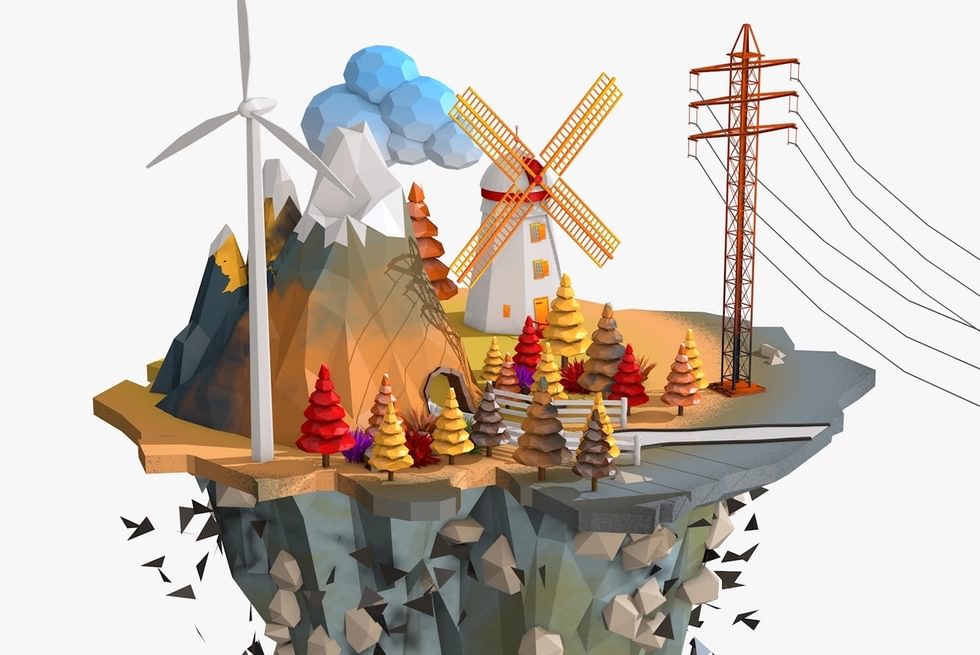Watershed
From the Series: Speaking Volumes
From the Series: Speaking Volumes

A watershed is an area of land from which water drains to a common outlet—generally the point where a river flows into another river, a lake, or an ocean. Watersheds, sometimes called drainage basins or catchments, have long been organizing units for human activity, shaping patterns of settlement, trade, and production. However, the use of the watershed as a way of conceptualizing space is relatively recent—often traced to eighteenth-century French river basin surveys. Since then, some have held up the watershed as an ideal unit for understanding interconnected environmental processes and managing resources. While watersheds are often represented on maps as if they were discrete and interlocking like puzzle pieces, their geographies are actually nested. The Mississippi River watershed, for example, is composed of subwatersheds, which are themselves composed of smaller subwatersheds, and so on.
Watersheds are constructed in the sense that our institutions determine whether their boundaries are socially relevant and, if so, which boundaries among the nested possibilities are significant. Nevertheless, they have been imagined as natural units for various political forms, from despotic state control (e.g., historian Karl Wittfogel’s hydraulic hypothesis) to radical democracy (e.g., anthropo-geologist John Wesley Powell’s proposal for river basin commonwealths). For the past century, however, the iconic form of watershed politics has been state-led, expert-driven multipurpose river basin planning modeled on the Tennessee Valley Authority. Regardless of the ideology affixed to watersheds in general, establishing the sociopolitical reality of a particular basin depends on assembling scientific knowledge, maps, laws, technologies, discourses, and institutions that correspond with its boundaries.
Around the Panama Canal, for example, twenty-first-century watershed politics are bound up with a history of what we might call volumetric imperialism. In the Hay–Bunau-Varilla Treaty of 1903, Panama granted the U.S. government control of the territory of the Panama Canal Zone in perpetuity (over five hundred square miles bisecting the isthmus at its narrowest point) and rights to the water drained by the far larger Chagres River basin—mainly Panamanian sovereign territory. When Panama assumed control of the Canal Zone from the United States in 2000, the Panama Canal Authority (ACP) became the first Panamanian institution to administer the canal. A 1999 law (Ley 44) tasked the ACP with transforming the imperial waterway into a pillar of national development and implementing multipurpose watershed management. The ACP would administer not one, but two watersheds: the “traditional” watershed of the Chagres River and a new construct called the “western watershed,” which included the catchments of three rivers that flowed into the Caribbean, never entering the canal. Why? Administrators hoped to expand the canal and the western watershed was seen as an auxiliary water source.
At the turn of the century, then, the western watershed was a legal reality, a geohydrological fiction, and a sociopolitical imaginary. Putting aside how three Caribbean-bound rivers would be routed into the canal from an engineering standpoint, my concern is watershed-making practice. While some of this work occurs in urban offices (analysis, modeling, policymaking), much of it is fieldwork (surveying, collecting environmental data, organizing meetings). Among watershed managers’ most difficult fieldwork challenges was convincing inhabitants to think and act as if they were residents of a region hydrologically linked to the canal and shipping. Like the making of the traditional canal watershed a generation before (see Carse 2014), this was the social groundwork for enacting regional land use plans and reorganizing property regimes.
Paradoxically, the watershed’s physical geography impeded efforts to make it a sociopolitical reality. Canal administrators had long seen the area west of the canal as a potential water source, but their efforts intensified in the late 1990s. The ACP, state agencies, and international institutions worked to collect watershed data and enroll residents in management through development projects, land titling programs, environmental education, and distributing watershed maps (Müller-Schwarze 2015). But the terrain complicated their efforts. Drawing administrative boundaries is one thing, but, on the ground, watershed management meant navigating rough topography, dense forests, and the torrential downpours of a rainy season that floods rivers and produces impassable mud. Much of the region was roadless, so campesinos walked, boated, or rode horses. The ACP scientists and sociologists, by contrast, dropped into communities in helicopters, where they were met with resistance.
The Coordinadora Campesina contra las Embalses (CCCE) formed in response to the 1999 law that established the western watershed and proposed creating reservoirs to supply the canal with fresh water and electricity. The social movement, supported by the Catholic Church, characterized the watershed as a geohydrological fiction and questioned its technical and economic necessity. Disputing state claims that watershed management represented integrated national development, the CCCE argued that flooding reservoirs would displace and impoverish thousands of campesinos and extend a history of developing the canal and transport sector at the expense of other regions, sectors, and citizens. They called for the watershed law to be repealed. Protests led to altercations with ACP personnel and conflicts within communities (Müller-Schwarze 2015). In 2003, protesters threatened to burn an ACP work camp and vandalized a hydro-meteorological station built to collect water quantity and quality data—a symbol of watershed-making and the canal’s claim on regional water.
Because watersheds have to be made as a sociopolitical reality, they can also be unmade. In 2006, months before a national referendum on the canal expansion, the western watershed disappeared—almost overnight—from state maps and proposals. The official rationale for repealing the watershed law was that the proposed lakes were unnecessary given technical design modifications in the final expansion plan (the project was approved in the referendum and completed in 2016), but officials also made it clear that they had responded to resistance across a terrain that resisted top-down control. Thus, a watershed faded back into the landscape.
Carse, Ashley. 2014. Beyond the Big Ditch: Politics, Ecology, and Infrastructure at the Panama Canal. Cambridge, Mass.: MIT Press.
Müller-Schwarze, Nina K. 2015. The Blood of Victoriano Lorenzo: An Ethnography of the Cholos of Northern Coclé Province, Panama. Jefferson, N.C.: McFarland.